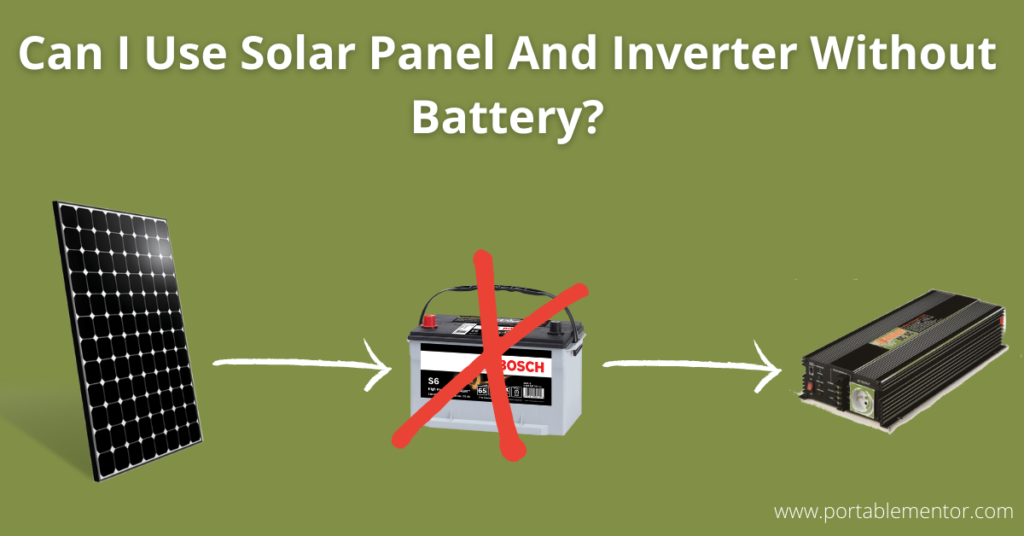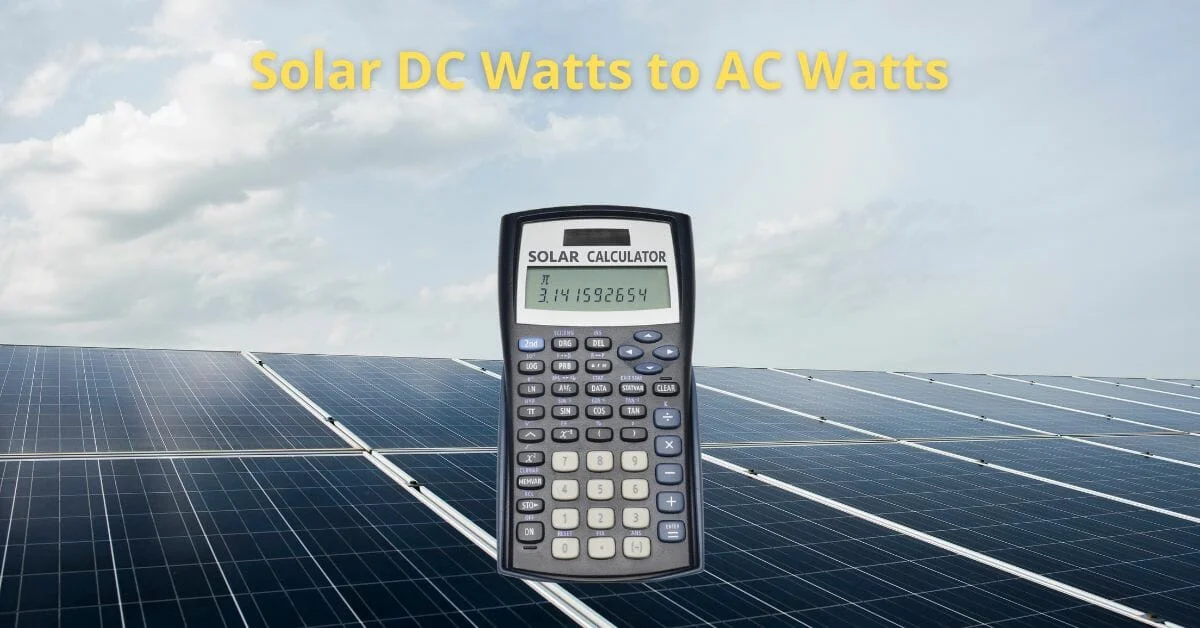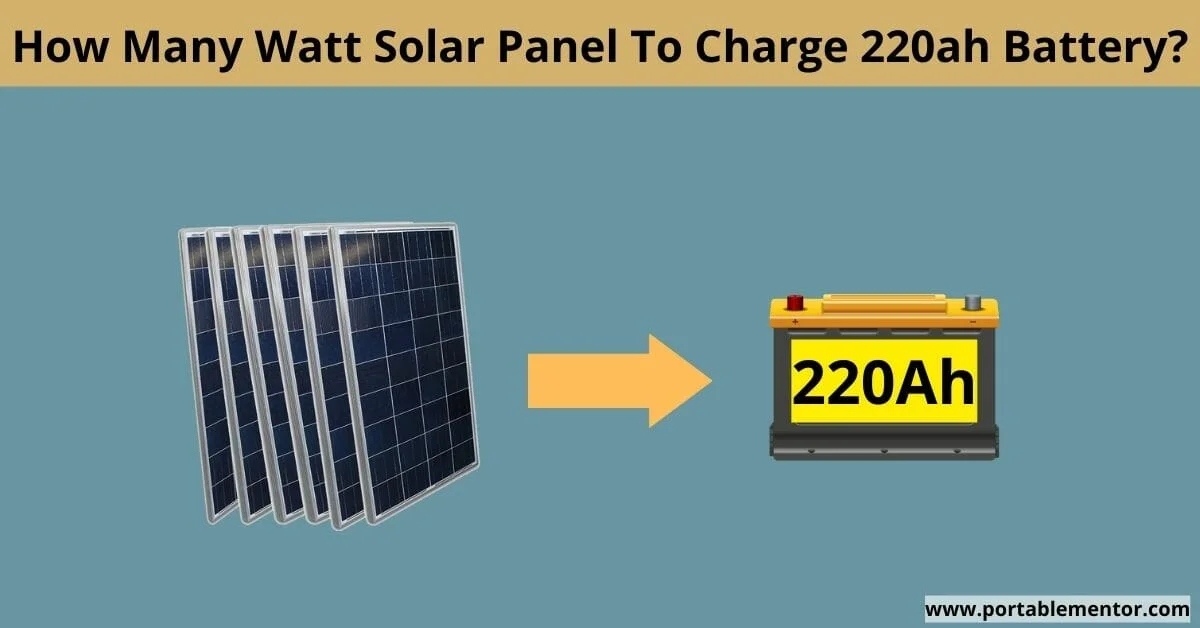
Batteries are one of the most important but expensive parts of any solar power system so a question came to my mind that ca I use solar panels and inverters without batteries. so I did some online research and here is what I found
Some inverters can accept DC inputs directly from solar panels but I would highly advise one not to connect it up to where the DC battery input is supposed to be. At least use a buck converter to convert that 20V DC into 12-13V DC as that's what the inverter is expecting to receive that way there's no risk of damaging your unit
there are a few things to consider before using solar power without batteries now let's discuss how we can connect the inverter with a solar panel without a battery
How to use inverter without battery?
The job of batteries is to store the DC power from the solar panels which we can use for later in the nighttime or in case of emergency
But what if you don't wanna store the power into batteries and wanna use that power right away without a battery, yes you can do that but it's not that simple
First, let's discuss solar panel's output voltage and amps, a 100w 12v solar panel will produce about 18-20v under direct sunlight conditions in noontime. but an inverter can accept 12-13 DCV (DC volt)
This is why we use a charge controller to charge our 12v battery with 12v solar panels, the charge controller's job is to adjust the voltage coming from the solar panels according to the battery requirement.
but these charge controllers or regulators are designed specially to charge batteries you can not connect the inverter directly with them.
so to drop down the DC volts from solar panels to 12-13 DCV we use a buck converter or DC to DC converter. whose job is to draw down the higher DC voltage coming from the solar panels to match the input of the inverter (12-13V)
It will increase the amps which makes them 95% efficient means if your 100w solar panels are producing 100 watts of power with 18v and 5.5 amps. So this controller will drop down the volts to 12 volts and will increase the amps to about 8 amps
so you'll the maximum power, to calculate the power use this formula volts x amps = watts
12 x 8 = 100 watts
with the help of a buck converter or DC-DC converter you can connect your inverter directly with the solar panels without any need for batteries
Difference Between Charge controller and Converter
The job of the charge controller and DC-DC converter or buck converter is to adjust the fluctuations in the voltage coming from the solar panels
but a charge controller or regulators are specially designed to charge batteries you can't connect the inverter directly with them.
But with a DC-DC converter, you can connect your 12 DC appliances and 12v inverter to run AC appliances.
i recommend HOMELYLIFE DC-DC converter which will convert up to 36 DCV into 12V and will increase the amps so you can run your 12v inverter or 12 DC appliances directly from the solar panels
What will happen if you connect the inverter directly with solar panels
if you have a 200w 12v solar panel and it produces 20 DC volts under ideal sunlight conditions so inverters are supposed to get 12v DC.
Some inverters may turn on and will also power AC appliances but by doing this you can damage your inverter, appliances, or even solar panels.
the high input voltage from the solar panels will damage the inverter because they are designed for 12v DC input. the inverter will heat up which can cause damage
Video - Connecting inverter directly with solar panels
Does the inverter need a battery?
The battery provides an output of 12 DC volts which an inverter can handle. Also, the inverter will use the stored power from the batteries according to the appliance requirement
for example, if you're connecting a 1000 watt ac appliance with the inverter so an inverter will draw the maximum power from the batteries depending upon its maximum output watt limit to run the appliance
The inverter needs a battery so it can draw the power from the batteries to run the appliance
Some Important Tips
- You won't able to run appliances in the nighttime or if it's a rainy day so you will be able to get power during the daytime only
- make sure that you're using the right size converter for your solar panels if the solar panels are producing 48 volts so buy a converter that can convert the 48 DC volts into 12 volts
- This is not the safest way to use solar power systems it can cause damage but the converters are designed in a way that can control the power accordingly but there is always some kind of risk involved
- Use a small solar array for this method don't apply this method to a large scale solar array
- it will be able to run high watt appliances than what solar panels are producing so you can run lights, laptops, and other small appliances
- do not use sensitive appliances with it like TV etc it can damage them
- if the solar panels are producing 100 watts and you're only using 50 watts the extra 50 watts will be a loss of power so you'll face power loss by doing this method this is why this method is recommended for small solar arrays which you can use right away
how to use solar panel directly without battery
Related FAQ's
in short Yes, solar panels can work without a battery with the help of a converter which will regulate the voltage and amps according to the inverter input and appliance input
A typical inverter doesn't have a built-in battery but a UPS style or portable solar generator contains a built-in battery.
The inverter converts the DC current to AC current to run most the household appliances on the other hand battery stores the DC current produced by the solar panels so you can use that power with the help of an inverter to run AC appliances
Conclusion
A battery stores the DC current from the solar panels so you can use it later on and it also regulated the power to run the inverter but they can be expensive in a solar array.
so you connect the inverter directly with solar panels with the help of the converter which will regulate the volts coming from the solar panels to run the inverter


